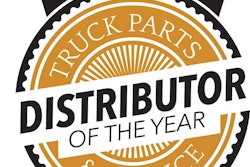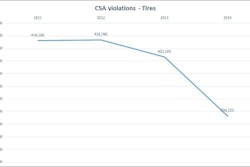By Bill Wade, Wade & Partners
The book Moneyball (a huge hit with the analytics crowd) was published in 2003. At the time Major League Baseball managers despised it because the book made them look like old-school dinosaurs. Then came an updated new take in July 2018 titled Astroball. Check out the league’s transition since 2003. Here are a few key points from the comparison:
- Even after Moneyball and the Red Sox’ analytically-powered World Series wins in 2004, 2007 and 2013, MLB’s adoption of analytics was halting.
- Only three owners (Red Sox, Cardinals, Astros) fully embraced analytics, and they were entrepreneurs who had become rich by exploiting analytics in other fields.
- Their approach was to transform one operational silo at a time by hiring new, younger talent with statistically-validated skills.
Analytics now pervades MLB and all other pro sports.
- Analytics forced every team to measurably, continuously improve, and a growth mindset became part of the culture, while the value of seniority and doing the same old things was increasingly discounted.
- Human nature, in the form of cognitive biases, strongly resists all statistical-decision thinking.
Analytics-avoidance excuses
Douglas Laney’s excellent book Infonomics, has an appendix of info-avoidance excuses. There are 120 listed in seven categories. These are rationalizations for a few emotional root causes, like management’s or veteran reps’ emotions:
- Don’t make my past, conventional-wisdom decisions look unprofitable (read: stupid)
- Don’t reduce my data-free, experiential-wisdom (power)
- I don’t readily get (or believe) the new data conclusions (statistical numeracy education required)
- I have no ready answers for how to exploit new data insights (Peter Principle promotion fixes may be needed)
- I can’t become a new, lead learner, so I’ll fight this (Lack of we-all-win vision; laziness; entitlement; insecure incompetence)
- Don’t upset our family (socialistic) values. As in Lake Wobegon, we all are above average with our data-free, wishful thinking. Rankings by measurable reality will upset both the exploited stars and the overpaid coasters. (Ask: Why can’t we hire and keep stars?)
Besides! We have existing plans to try harder and work faster at what we have always done.
What, specifically, are heavy-duty analytical opportunities?
My partner Bruce Merrifield (with whom I work on the WayPoint Analytics product) currently looks at over $75 billion in distributor sales from many forms of specialty industrial logistics. He suggests that the biggest losses from ignoring the numbers include:
- Forgoing core customer renewals, before competitors steal your most profitable accounts.
- Not monetizing both supplier and customer (un)profitability information. Grocers have been sharing data for triple-wins with customers, stores, and factories for years.
- Skipping profitability information which could create omni-channel solutions with factories/groups/distributors in preparation for the cloud commerce world of 2021.
- Ignoring new value solutions for sales reps, because time-and-territory, routine calls won’t work with demographically-increasing millennial, digital buyers.
Future-shock cloud e-commerce is here
In 2018, well over $100B will be spent on digital cloud e-commerce capabilities. Even the large public distributors are spending millions on upgrading digital-selling capabilities. The telecommunications companies have started, in parallel, a race to build out 5G wireless bandwidth starting in major cities. By 2021, best business-to-business (B2B) customers in top 50 cities will:
- Be, increasingly, digital-buying millennials who don’t want regular rep calls.
- Have 5G phones providing 100-fold increases in bandwidth, 15 to 90 second augmented video infomercials will be prevalent.
- Be starting their product discovery journeys on Amazon (if vertical marketplaces don’t emerge).
Manufacturers will have to advertise on Amazon to be where the eyeballs are. If an end-user wants 24/7 real-time e-help, brands will provide it. If end-users want to spot-buy something direct from the factories, then new omni-channels will deliver. (Some dis-intermediation for distributors is certain, and it has nothing to do with loyalty.)
Channel selling will shift significantly from reps pushing products to end-users, to end-users pulling information and products to themselves digitally. I think that most non-spot-buying, sales volume will still go through traditional distributors. But, these trends will quickly pressure traditional, bundled, selling-service (rep) costs, covered by traditional product-markups.
Three steps to winning at cloud selling
Most of our traditional fleet specialists’ ‘Step One’ has been to bolt on better web-selling capabilities to their highly-evolved business model. But, more small orders with a high fulfillment-cost structure yield modest sales growth and shrinking profits.
The combined strains of the big switch to cloud e-commerce from now to 2021 will force many into ‘Step Two,’ Transition Chaos.
Some will either survive by making significant changes to their operations at the margins or jump directly to ‘Step Three,’ invent new, “from-scratch,” separate cloud e-commerce business models aligned with serving targeted, digital end-users.
Warehousing may be outsourced to robotic facilities. The digital service models, prices, and terms will vary with end-users’ choices. And in parallel, big-volume accounts’ replenishment systems, services and selling must be rethought and digitally assisted.
Analytics for The Big-Switch Challenges
If suppliers and distributors have shared SKU-profitability analytics, then they can co-create win-win omni-channel solutions. The same analytics can guide distributors in rethinking their sales force – skills, assignments, and compensation – to sell better replenishment systems to bigger, best accounts.
A Harvard Business Review study shows that 50 percent of high-performing sales organizations have well-documented sales processes (often analytics based) that are explicitly structured, compared to 28 percent of under-performing organizations. You can’t just haphazardly start moving sales reps, changing compensation plans and expect your business to grow automatically. Don’t just do analytics … use analytics.
As the boss, it’s your responsibility to choose the appropriate organizational structure that fits your business and your culture. In doing so, you’ll cultivate a high-growth environment that will allow your sales force to truly shine.
Just as at the top of MLB (see Houston Astros vs. Boston Red Sox) has learned to use analytics to turn its teams into winners, so can you. Houston went from “worst to first” in three years – it shouldn’t take our industry any longer!
Bill Wade is a partner at Wade & Partners and a heavy-duty aftermarket veteran. He is the author of Aftermarket Innovations. He can be reached at [email protected].











